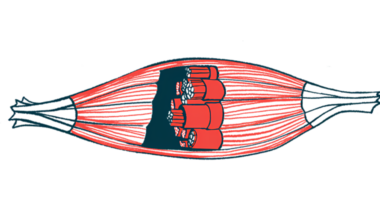Gene therapy AAV-GAD wins RMAT designation for Parkinson’s
Status given after studies showed treatment aided motor symptoms, life quality

The U.S. Food and Drug Administrated (FDA) has granted Regenerative Medicine Advanced Therapy (RMAT) status to AAV-GAD, MeiraGTx’s gene therapy for Parkinson’s disease, the company has announced.
The designation was granted based on data from three clinical studies showing the treatment eased motor symptoms and improved the quality of life of people with Parkinson’s. The company is now in regulatory discussions to initiate a Phase 3 study this year.
RMAT is intend to accelerate the development of regenerative therapies that target serious conditions and have the potential to address an unmet medical need. The designation allows for more interactions with the FDA during the product development program, including help with clinical trial design and manufacturing strategy, along with a faster and, potentially, a priority review.
“We look forward to working closely with the FDA to bring this potential life-changing therapy to this large population of Parkinson’s patients in need of effective and disease modifying treatments for this serious neurodegenerative disorder,” Alexandria Forbes, PhD, president and CEO of MeiraGTx, said in a company press release.
Parkinson’s is caused by the loss of dopaminergic neurons, the nerve cells responsible for producing dopamine, a signaling molecule involved in motor control. This leads to abnormally low levels of dopamine in the brain, ultimately resulting in the disease’s symptoms.
What is AAV-GAD, and how does it work in Parkinson’s?
AAV-GAD is a one-time gene therapy that uses a modified version of a virus, called an adeno-associated virus (AAV), to deliver the GAD gene to brain cells. This gene provides instructions to produce glutamic acid decarboxylase, an enzyme needed to make gamma-aminobutyric acid (GABA), a key signaling molecule in regulating brain activity.
The therapy is delivered by direct surgical injection into the subthalamic nucleus, a brain region that helps control movement and is affected in Parkinson’s, to increase GABA levels in this region. This should normalize brain signaling and ease symptoms in people who don’t respond well to standard medications, particularly levodopa.
In a Phase 1 trial (NCT00195143) AAV-GAD was safe and well tolerated, with no evidence of adverse events related to the therapy when administered to one side of the brain in 12 people with Parkinson’s disease. The therapy also led to significant improvements in patients’ motor function for up to a year after it was administered.
The treatment was also tested in a Phase 1/2 trial (NCT00643890) that enrolled 45 people with advanced Parkinson’s who were randomly assigned to receive the treatment in both sides of the brain, or a sham procedure, which refers to a similar surgery, but without the therapy being delivered.
The trial met its primary endpoint of improving motor function for up to one year. The treatment also significantly reduced dyskinesia – sudden, uncontrolled movements — associated with long-term use of levodopa, the mainstay Parkinson’s treatment.
Also, no GAD-treated patients saw a worsening of Parkinson’s disease, compared with 35% of those in the sham group. The most common side effects were headache and nausea. AAV-GAD also normalized brain network connectivity in relevant motor regions, as assessed by PET scans.
Another Phase 1/2 trial (NCT05603312) enrolled 14 people with idiopathic Parkinson’s who received either a low or high dose of AAV-GAD, or a sham. After six months, the treatment improved motor function and quality of life, particularly in the patients who received the high dose.
The participants who completed this trial could enter into an extension study (NCT05894343) where all will receive the gene therapy and be monitored for up to five years.
“This is the first time sham-controlled gene or cell therapy Phase 2 studies have shown significant benefit in UPDRS and now, to our knowledge, the only demonstration of disease modification in a sham or placebo-controlled study in Parkinson’s disease,” Forbes said.







